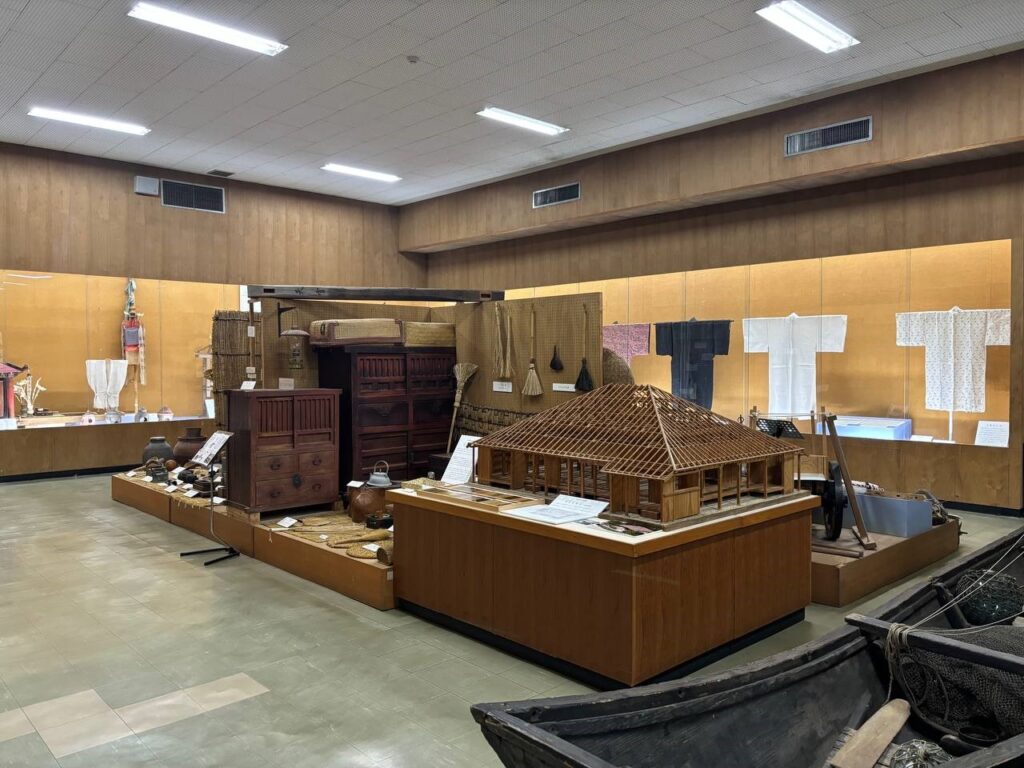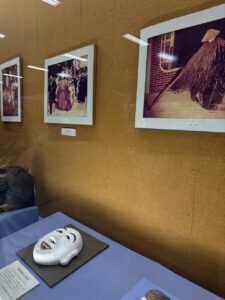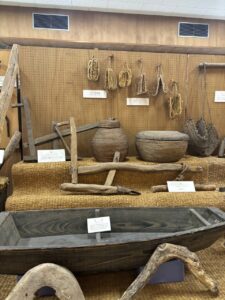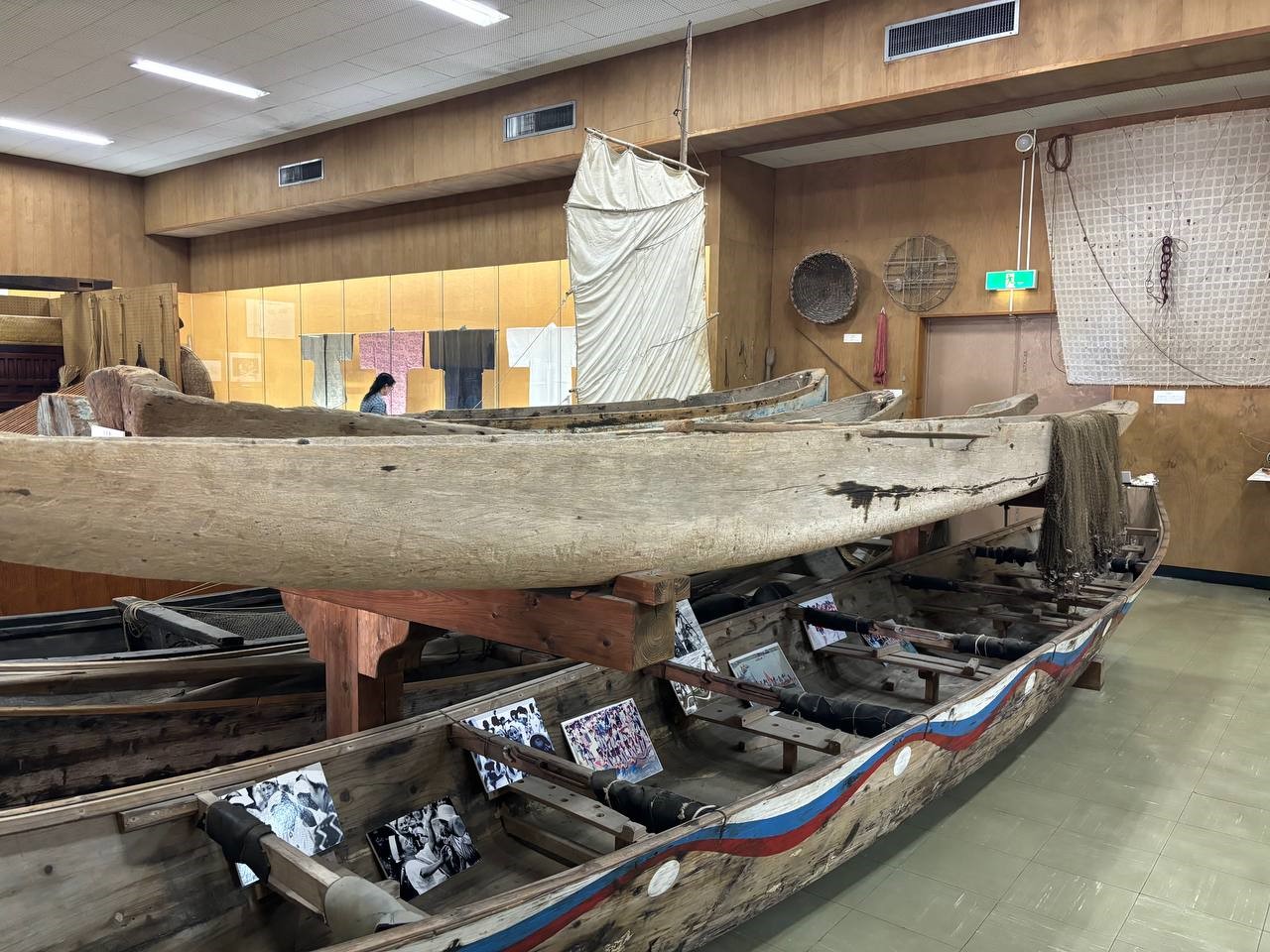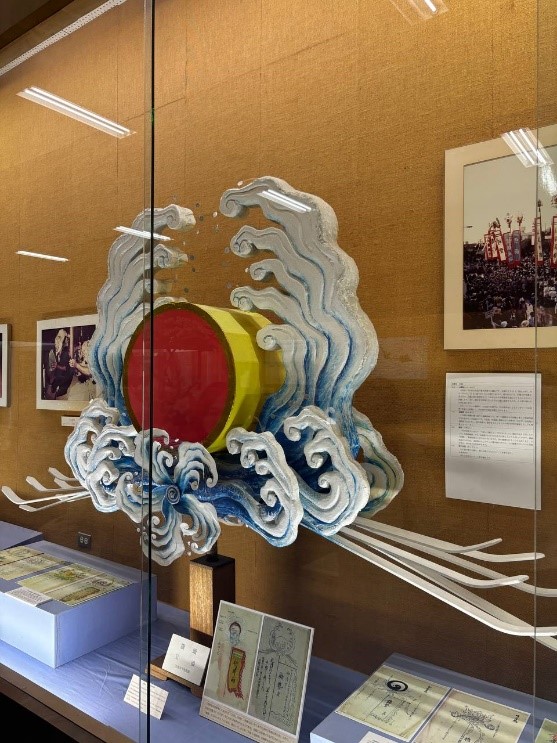Amanbaiuly Mukhtar
Our field trip began with a visit to the “Ishigaki City Yaeyama Museum”, where we attended an in-depth lecture on the island’s history and culture. The museum distinctly depicted the culture and life of the island from a detailed point of view.
The museum itself has an interesting fact. The former site of Ishigaki City Hall, now was first opened in 1972 as a public museum.
The museum boasts an extensive collection of exhibits, highlighting the traditional crafts of the Yaeyama Islands. Among the displays are traditional boats and canoes unique to the region, Shiisa masks used in Okinawan festivals, and local textiles, including traditional clothing. In general, the exhibits provide a thorough insight into the cultural and historical heritage of Ishigaki and the neighboring Yaeyama islands.
The initial lecture began with an overview of the island’s history and its people. Human bones, dating back approximately 27,000 years, were discovered, but without any accompanying tools, making it difficult for researchers to determine the specific lifestyle of the early inhabitants. It is believed that the Yaeyama people developed a unique culture, distinct from both Okinawa and mainland Japan, which has an impact of the tropical landscape of the region.
The Yaeyama people also created their own language system, known as the Yaeyama dialect, this differs from both the Okinawa and mainland Japan. The Yaeyama dialect is not a single uniform dialect; rather, each island, and even individual villages, may have its own variation. Which is said that the language might have up to 60 different versions. Today, the number of people fluent in the dialect is dwindling, prompting efforts to preserve it.
Historical portrait of the islands
The first communities on these islands appeared in an area known as Shimotabaru, and they left behind a significant mark through their pottery. It’s believed to be the foundation of pottery in both Miyako and Yaeyama. These ancient sites were discovered on red volcanic soil, a clue to their origins. After a relatively short period of the Shimotabaru culture, about 800 years later, the next phase of settlement began, making room for the arrival of the Mudoki people.
The Mudoki people eventually emerged, but unlike their predecessors. Despite this, they claimed a history that spanned thousands of years. Their culture was centered around the use of stone and seashells, and they had distinctive practices, like cooking food by steaming it on hot stones. They also developed agricultural techniques and harvesting skills, which helped their population grow. However, their indigenous way of life began to decline with the influence of the Japanese.
Despite being isolated from the mainland and being located far, the proves of trade had been found back in history. Around 500 years ago, evidence of cultural exchange was found through pottery from China and the mainland, showing a blending of influences. During this time, Ishigaki Island became part of the Ryukyu Kingdom, but continued its connections with Chinese dynasties.
As for 1609, feudal domain Satsuma invaded the Ryukyu Kingdom, and this year has been marked as a year for kingdom to be a vassal of the Satsuma domain, subsequently becoming a part of Japan. When the Japanese arrived on the islands, they noticed the absence of a temple and instructed the Ryukyu king to build one while also promoting the adoption of Japanese culture. Consequently, the first temple was constructed in Ishigaki island in 1609, marking the introduction of Japanese influences to the island.
One of the interesting exhibits that showed local traditions were “Hatagashira”. These are the flag banners made for celebrations, with each village having its own unique design. These banners are typically used during the “Obon” festival, celebrated in mid to late August, honoring the spirits of ancestors.
In general, this museum showed all-rounded interested information and exhibits to get into the historical and cultural parts of the island.

